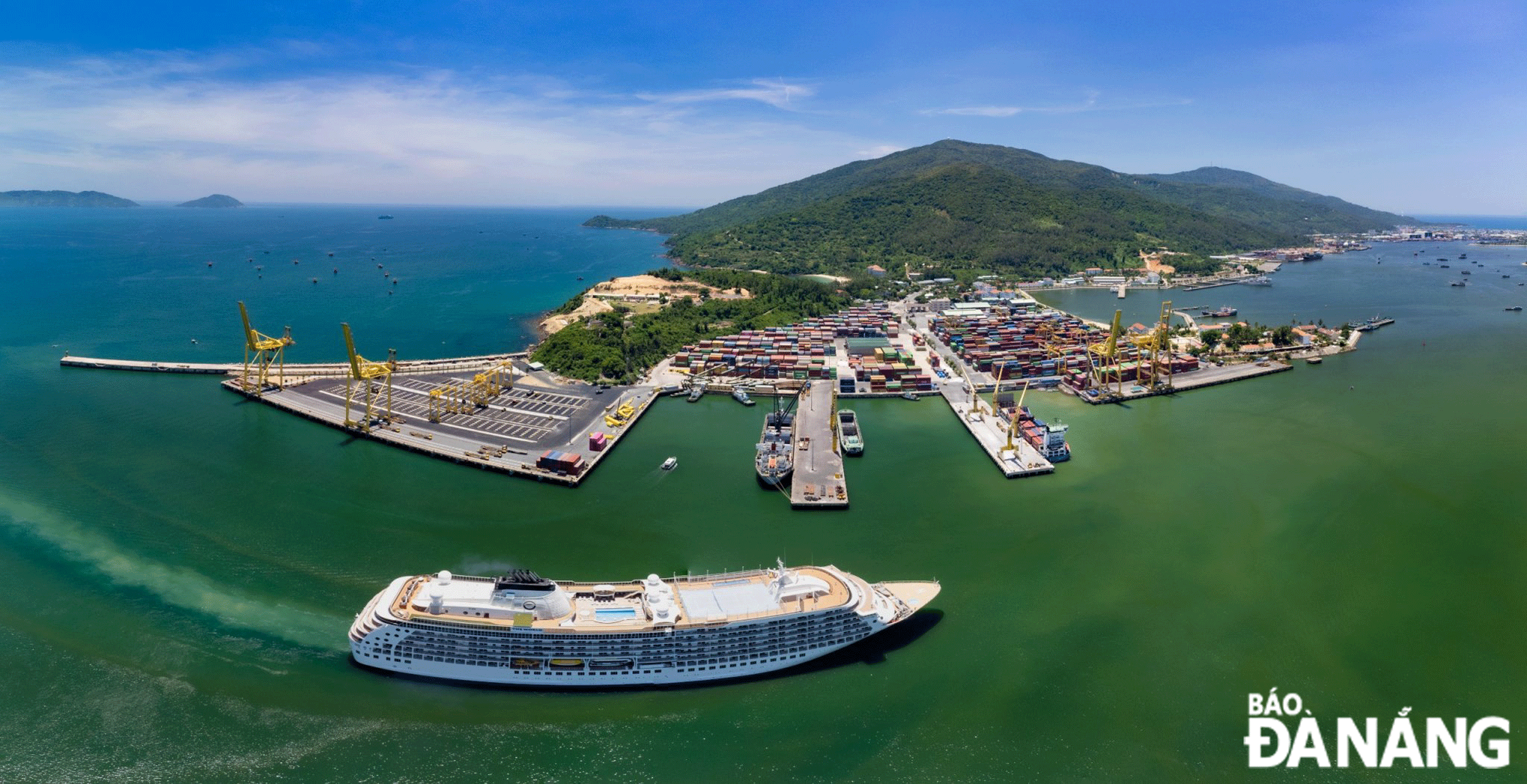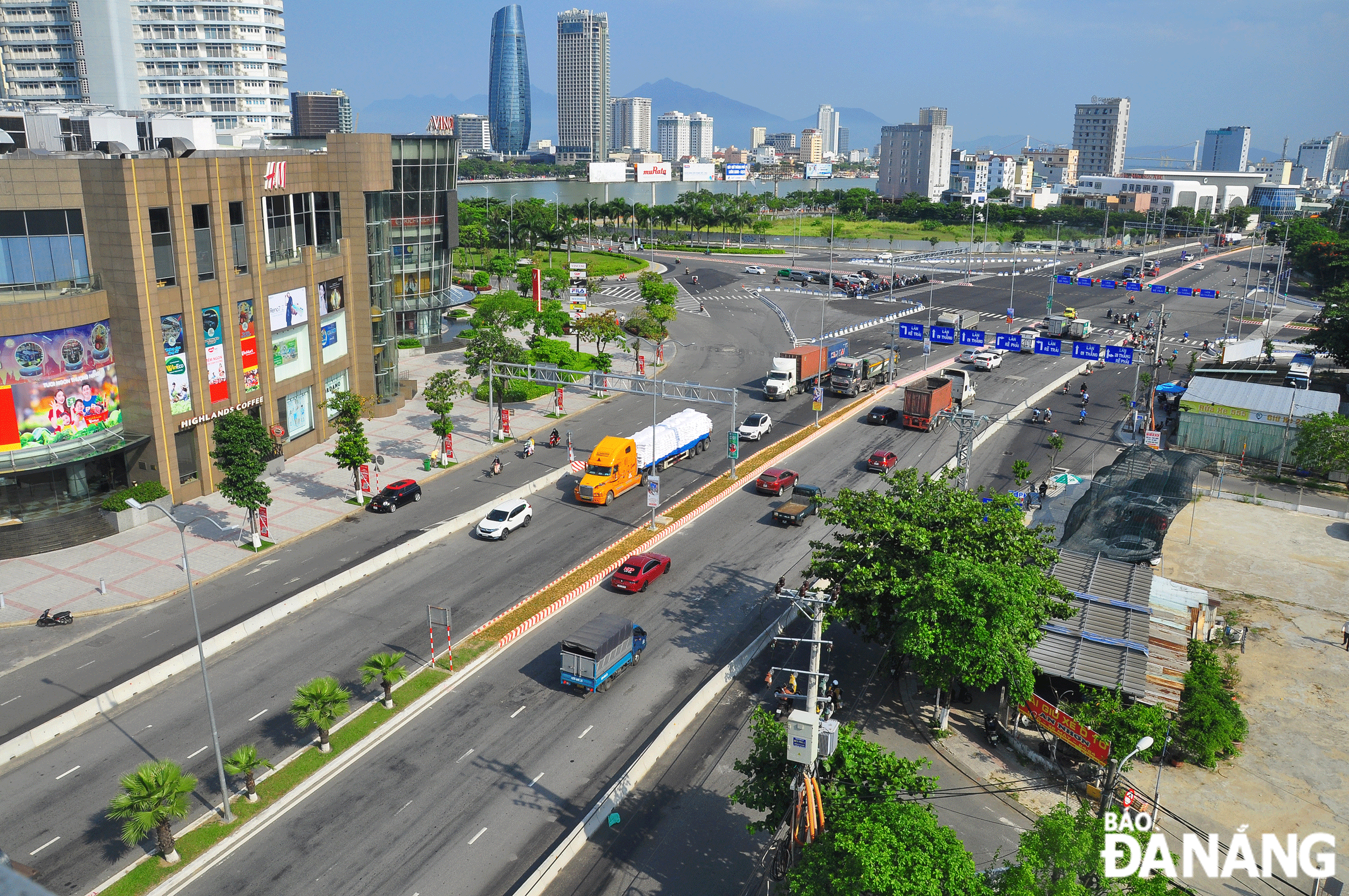Transport infrastructure promotes Da Nang logistics economy
Recently, Da Nang has focused on investing in perfecting traffic infrastructure in a synchronous and modern direction, increasing the regional economic connectivity between the city and other localities in Viet Nam’s central region, creating motivation to promote the socio-economic development, investment attraction, including the logistics field.
 |
| The Tien Sa Port infrastructure meets the needs of receiving large tonnage cruise ships. Photo: THANH LAN |
Convenient transportation infrastructure
According to the Centre for Traffic Infrastructure Management, Da Nang is one of the localities with a diverse and complete transport infrastructure system, including 4 types: railway, roadway, airway and waterway.
Along with the advantages of geographical location, nature, modern infrastructure, Da Nang has become the centre of trade, tourism, logistics of the Central Viet Nam- Central Highlands regions and the whole country. From Da Nang, travelling to other Vietnamese localities and even outside Southeast Asia is convenient.
The first highlight of Da Nang’s transportation infrastructure is that the city has a convenient deep-water seaport system, which is the existing Tien Sa Port, Tho Quang fishing wharf and the under-construction Lien Chieu Port. This has turned Da Nang into a major maritime transport centre of Viet Nam, an important logistics hub, a strategic link on the East - West Economic Corridor with a 1,450km road route from Mawlamyine, Myanmar and ending in Da Nang of Viet Nam, connecting Myanmar and Viet Nam via Thailand and Laos.
The city also achieved significant results from the marine economy, making an important contribution to socio-economic development of the city and the region. Along with that, the seaport system has continuously been upgraded and expanded, meeting the increasing needs of import and export activities.
In addition, in the 2000-2023 period, the city has made new investment, renovated and upgraded many important projects such as bridges, ring roads, riverside roads, national highway 14B and inter-provincial roads.
From Da Nang, it is easy to connect quickly and conveniently to tourist destinations in the Central Viet Nam- Central Highlands regions by road. The city also promotes the development of inland waterways, creating favourable conditions for goods transportation and tourism.
According to Chairman of the Da Nang Road Freight Transport Association To Van Hiep, Da Nang’s road system has quite developed, including highways, national highways, provincial roads and urban roads. Quang Ngai - Da Nang, Da Nang - La Son expressways are vital routes, connecting Da Nang with the central cities and provinces. National highways 1A, 14B, 14G pass through Da Nang, connecting it with other provinces and cities throughout the country.
Over the past years, the urban road system has been expanded to meet the travel needs of people. Along with that, other inter-regional routes such as Da Nang - Hue, Da Nang - Quang Nam, Da Nang - Quang Ngai and Da Nang - Kon Tum have helped promote economic development.
Meanwhile, in terms of aviation, the Da Nang International Airport is currently the third largest of its kind in the country. Given the fact that Da Nang is located at the midpoint of the country, there are favourable conditions to take flights therefrom to the capital city of Ha Noi, the southern metropolis of Ho Chi Minh City and many places around the world.
With regards to railways, in March 2024, the tourist train named ‘Central Heritage Connection’ linking Hue and Da Nang officially began operating. Recently, the high-quality Da Nang - Saigon train service also came into operation, contributing to increasing high-end travel experiences, connecting destinations favoured by international tourists in the central region.
 |
| Da Nang’s transportation infrastructure is increasingly invested in modernity. Photo: THANH LAN |
Develop more modern transport infrastructure
According to the 2021-2030 planning period, with a vision toward 2050, by 2030 Da Nang will have a synchronous internal and external traffic system and continue to upgrade and expand it in the next period. Accordingly, the city will implement a series of strategic transportation projects.
First of all, investment has been channeled into key roads such as the Da Nang - Thanh My - Ngoc Hoi - Bo Y Expressway connecting with the Da Nang - Quang Ngai Expressway, the upgrade of the La Son - Tuy Loan Expressway, the construction of Tuy Loan - Hoa Lien Expressway, the upgrade of National Highway 14B in Da Nang into a 6-lane urban main road.
Meanwhile, as for the urban road network, the city will construct an underpass through the airport connecting the east and west, add new routes connecting the Lien Chieu Port with a bypass southern of the Hai Van - Tuy Loan Tunnel. At the 16th Da Nang Party Committee Conference (July 16), the municipal People's Committee reported on the implementation status of major projects.
Notable content was the investment preparation work to build tunnels across the Han River and through the Da Nang airport, respectively. These are two important projects, located in the 2021 - 2030 planning period, with a vision toward 2050 approved by the Prime Minister, with investment phasing for the 2031 - 2045 period.
Among the 36 projects in the list of projects to attract investment to Da Nang in the 2022 - 2026 period, with an orientation toward 2030, there are 9 projects in the fields of transportation, infrastructure and logistics.
According to Director of the Da Nang Department of Transport Bui Hong Trung, Da Nang's transport infrastructure has been playing an important role in the city's socio-economic development. Investment in transport infrastructure development is necessary to enhance Da Nang’s competitiveness regionally and internationally.
Currently, the city has 2,694 routes with a total length of 1,554,401km, 75 bridges with a total length of 15,075.4m. In the coming time, the city will continue to invest in building modern transportation infrastructure.
Reporting by THANH LAN - Translating by ANH THU, P.TRA